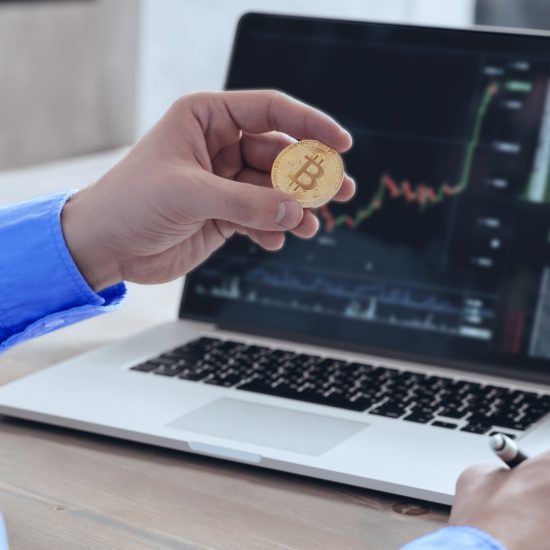 /By Matien Khalid/I have been bullish on emerging market debt as an asset class since last autumn. Even though the Chinese yuan devaluation was toxic, this asset class is up 12% in 2016, thanks to almost $5 billion in cash inflows. The tax amnesty in Indonesia, the political changes in Brazil after President Dilma’s impeachment, the election of a center-right pro-business government and $16 billion sovereign debt new issue in Argentina, the successful Reserve Bank of India (RBI)’s inflation targeting policies, the Thai military junta’s successful referendum and the dramatic compression in sovereign debt spreads in Russia all contributed to the highly profitable performance of emerging market debt in 2016.
/By Matien Khalid/I have been bullish on emerging market debt as an asset class since last autumn. Even though the Chinese yuan devaluation was toxic, this asset class is up 12% in 2016, thanks to almost $5 billion in cash inflows. The tax amnesty in Indonesia, the political changes in Brazil after President Dilma’s impeachment, the election of a center-right pro-business government and $16 billion sovereign debt new issue in Argentina, the successful Reserve Bank of India (RBI)’s inflation targeting policies, the Thai military junta’s successful referendum and the dramatic compression in sovereign debt spreads in Russia all contributed to the highly profitable performance of emerging market debt in 2016.The Yellen Fed’s reluctance to raise US interest rates despite strong US payrolls data and rising wage growth contributed to the record inflows in emerging market debt, as did the global obsession with yield in a world where the ECB, the Bank of Japan and the Bank of England are all engaged in quantitative easing while $12 trillion in fixed income securities sport negative yields.
The most successful emerging markets debt tracker in the world is the J.P. Morgan USD Bond exchange traded fund (symbol EMB), which has offered a 78% total return since its launch in 2007, compared to a 18% loss in MSCI emerging markets equities index. The most compelling reason to invest in this asset class was the near zero Fed Funds rate in the US since the Bernanke Fed slashed its policy rate after Lehman’s failure in September 2008. This existential reality in the global debt market triggered a “hunt for yield” by retail investors that has seen emerging market debt index fund assets rise to $16 billion.
Of course, this asset class becomes leprosy if investors suspect that the Federal Reserve is about to tighten interest rates. In May 2013, when Ben Bernanke uttered the word “taper”, a global sell off saw investors yank $3 billion from emerging markets debt as the J.P. Morgan index fund dropped 10% in June and July 2013. A prospective Fed rate hike to investors in Third World debt, is akin to a cross of gold shown to Count Dracula at daybreak.
I am amazed that private banks in Dubai encourage investors to leverage emerging markets and corporate bonds on the eve of history’s biggest debt market bloodbaths as the Yellen Fed reaches the limits of its dual mandate while the Western world abandons fiscal austerity for deficit spending. This could trigger another tsunami of tactical outflows in emerging market debt index funds. The J.P. Morgan emerging market index fund (symbol EMB) has a duration of 7.2 years, a disaster for investors if the Yellen Fed turns hawkish at Jackson Hole or the September FOMC. The J.P. Morgan EM index fund (symbol EMB) has risen from 103 in January to 118 now and its assets are now at a record $9.56 billion. It boasts a yield of 4.7% and a Sharpe ratio of 1.97.
I have been hugely bullish long duration Argentine assets even before the election of President Mauricio Macri last November. The shares of Banco Macro, Argentina’s largest publicly traded private commercial bank, returned 100% since I recommended them in this column last October. So it was no surprise to me when President Macri negotiated a deal with holdout Paris Club creditors and paved the path for Argentina’s historic $16 billion sovereign new issue. Argentina’s bond rose from par to 112 in only four months. My bet on Argentine political risk was spectacularly profitable in both Banco Macro’s New York shares (symbol BMA) and the Republic of Argentina sovereign debt. Yet political risk in this asset class can wipe investors out, as happened to a UAE family office owning Russian rouble debt after Putin invaded Ukraine and annexed the Crimea in March 2014. When emerging markets go ballistic, there is no place to hide!
Macro Ideas – Saudi Aramco will be financial history’s biggest IPO
It will be the mother of all initial public offerings (IPO), unquestionably the biggest financial deal in history. Saudi Aramco is a $2 trillion colossus, the largest oil and gas producer on earth, owner of one fifth of the kingdom’s oil reserves. Saudi Aramco financed the epic transformation of Saudi Arabia into the powerbroker of OPEC, the biggest economy in the Arab world and the geopolitical future of the Middle East. Saudi Aramco pumps more crude oil than Exxon Mobil, Shell, BP and Chevron combined. If the Saudi Arabian government privatizes Saudi Aramco to create the world’s largest sovereign wealth fund, when it sells 5% of the company in 2017 on the international financial markets.
The privatization IPO of Saudi Aramco is central to Deputy Crown Prince Mohammed bin Salman’s Vision 2030 strategy, which is nothing less than a blueprint for the kingdom’s post Oil Age economy. Alibaba’s IPO in New York and Shanghai raised $25 billion but the Saudi Aramco IPO will raise at least $100 billion. The crash in crude oil prices since 2014 and the geopolitical crises in the Arab world since 2011 have only intensified the need for the Saudi government to boost its economic growth rate, diversify its non-oil consumer services and industrial base and attract foreign capital to the kingdom. Not since the reign of the King Faisal bin Abdul Aziz, which coincided with the black gold bonanza of the early 1970’s just after the Arab-Israeli war in the Sinai and the Golan Heights, has the economic momentum of the kingdom portend change on such seismic a scale. Saudi Arabia’s economic transformation creates once in a lifetime investment opportunities for prescient investors.
The IPO of Saudi Aramco will transform not only the public finances of the kingdom but also its financial governance and its oil and gas industry. Since the shares will be placed with institutional investors in New York, London and Hong Kong, Saudi Arabia will disclose audited financials and output data to the global capital markets, as is the norm with mega privatization IPO deals. A syndicate of international banks would share the biggest equity underwriting fee jackpot in the history of Wall Street, the City of London and Hong Kong.
The IPO of Saudi Aramco would be a milestone moment in the history of postwar finance, an event as transformational as Sir Sigmund Warburg’s Eurobond new issue for Italy’s Autostrade or the evolution of the Sharia compliant (sukuk) debt markets in the 1990’s. Ever since Chevron geologists first struck oil in a Dammam salt dome in 1937, Saudi Aramco has been the financial umbilical cord of the kingdom, generating for 90% of budget revenues.
It is still unclear if Saudi Arabia will privatize Aramco’s upstream assets or just sell stakes in its vast refining or petrochemical complexes. It is also unclear how a privatized Saudi Aramco will impact the Saudi government’s output or pricing strategies in the global oil market or impact its relations with OPEC. If Saudi Aramco is public, I doubt if the kingdom will ever play the role of OPEC’s “swing producer” or the “central bank of black gold”, since output cuts are incompatible with revenues maximization. This alone means a shift in the nodal points of world economics and politics.
As happened just before OPEC’s Doha meeting, Brent and West Texas crude prices have risen on hopes for an oil deal at Algiers next month. I believe that it is unlikely that Saudi Arabia and Iran (let alone Iraq or Russia) will agree to any oil output freeze as wars rage in Syria, Yemen and Ukraine/Crimea. Iran has ruled out any output ceilings. Nigeria is desperate for petrocurrency revenues after the botched naira devaluation. Saudi Arabia has ruled out a unilateral output cut. Iraq is at war with Daesh. Libya has just returned to the international oil market. Venezuela is bankrupt. A disappointment in Algiers will be hugely bearish for crude oil prices.
Stock Pick – Morgan Stanley under accumulation by a hedge fund!
Activist hedge fund ValueAct has accumulated a 2% stake in Wall Street investment (and since 2008) commercial bank Morgan Stanley. Jeff Ubben, who once took on the management of the Evil Empire of Redmond (aka Microsoft!) has invested $1 billion, making ValueAct the bank’s eighth largest shareholder. The hedge fund has emphasized its support for CEO Jamie Gorman and has blessed his strategy of transforming the firm from a volatile fixed income trading powerhouse to the one of the largest recurrent fee income model of wealth managers in the world, thanks to his brilliant purchase of Smith Barney from Citigroup in the Vikram Pandit era, ValueAct’s motivation for buying Morgan Stanley is exactly the same as my motivation for recommending it in this column. At 0.72 times tangible book value and 10 times earnings, Morgan Stanley seemed one of the true undervalued jewels of Wall Street relative to its potential earnings power and secular growth rate. This is no hostile takeover deal in the offing but a “friendly” activist hedge fund’s quest for value in the bank’s shares.
Morgan Stanley never truly really recovered from the trauma of the 2008 global financial crisis and Lehman’s failure, which forced it to convert into a bank holding company to access the Bernanke Fed’s discount window. John Mack’s strategy to out Goldman Sachs with colossal bets on the proprietary fixed income desk backfired spectacularly once the debt markets seized up in 2008. Seven years into one of history’s great bull markets, Morgan Stanley managed to earn only a miserable 6.5%, far below the bank’s cost of capital. In fact, it is now ten years since Morgan Stanley last delivered even a 10 per cent return shareholder equity.
Jamie Gorman, the Aussie ex McKinsey management consultant who reinvented Merrill Lynch’s fabled global wealth management business (all for naught since the Thundering Herd paid for Stan O’s epic blunders by being swallowed up by Bank of America), has slashed fixed income prop trading limits, payrolls and shed complex, capital intensive businesses, as was inevitable in the age of the Volcker Rule and Dodd Frank. However, 2016 was tough for the bank’s wealth management business, due to a flatter US Treasury yield curve, a bloodbath in the energy/high yield debt market and, above all, the fallout from Brexit and the higher central bank mandated capital surcharges.
The Chinese yuan depreciation in January 2016 and the angst over contagion risk from the Italian banking system all helped to trigger a bear market in Morgan Stanley shares from 40 to 24, though they have now recovered to 29. This is the reason Morgan Stanley’s beta is among the highest among its US money center banking peers, far above J.P. Morgan Chase and Wells Fargo. This means this puppy can go “risk off” in a moment, as it did in 2008 (Lehman), 2010 (Greece) and 2015 (China).
Morgan Stanley’s fixed income, currencies and commodities (FICC) division delivered $1.3 billion in the second quarter, while the equities division earned $2 billion. Yet from revenues were still lower by 7% to $8.9 billion, though better than the Street whisper number, the reason the shares rallied since mid July.
It is entirely possible that Morgan Stanley earns $3 EPS in 2016 and its shares rerate to 12 times earnings. This means that the bank’s shares can rise to $35 at least (my prior target) or more, if ValueAct raises the decibel count on Gorman’s strategic transformation.
There are significant headwinds to higher profit growth at Morgan Stanley. Gorman has not remotely achieved his 9 to 11 per cent return on equity (ROE) targets despite epic job cuts. After all, Gorman fired one fourth of Morgan Stanley’s global fixed income division in 2015. Equities revenues fell despite a surge in global mergers and acquisitions deals. Morgan Stanley needs to leverage its asset/wealth management and deal advisory businesses worldwide to produce sustainable profitability growth metrics to merit a potential valuation rerating on the shares. ValueAct can hopefully help Gorman achieve the holy grail of a double digit return on equity, a target that proved so elusive in the past six years he has led the firms. Are McKinsey management consultants, after all, glorified bean counters?





